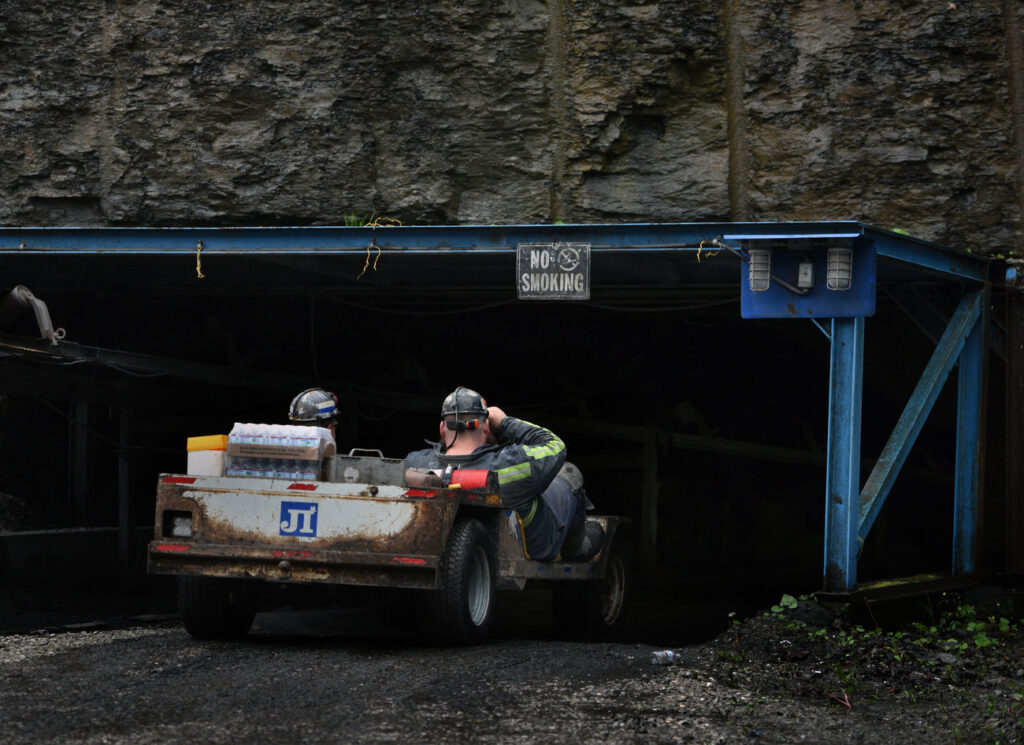Higher coal and natural gas prices, and higher demand for both generated a severance tax windfall that fattened the state’s budget surplus last year. But the prices for both fossil fuels have declined in recent months.
Sean O’Leary, senior policy analyst for the West Virginia Center on Budget and Policy, said the state could find itself with a shortfall instead of a surplus in the coming years. He spoke with Curtis Tate about the volatility of the severance tax.
This interview has been edited for length and clarity.
Tate: What’s happening with the severance tax right now? Will it result in another big surplus?
O’Leary: The difference is shrinking. We had a big increase over last year’s revenues in the first half of the fiscal year. That gap is starting to get smaller. And I think in February, we collected less severance tax revenue than we did last February. So we’re already starting to see that come back down to earth.
Just under half of the surplus that we’re running this fiscal year is from the severance tax. And we know that’s changing rapidly. It’s changing rapidly now. So when we’re basing a lot of policy on the fact that we have this big surplus, and that big surplus is being driven by the severance tax, and we know historically, and we can see it happening right before our eyes, that there’s a lot of volatility and what is there today might not be there tomorrow.
Tate: Can you describe where the severance tax fits into the tax revenue stream and what it provides for state and county government?
O’Leary: For the state budget, it’s one of the big four sources of revenue. You have personal income tax, the sales tax, severance tax, and business corporate income tax. So that’s one of our main sources of revenue for the general revenue fund.
It’s usually in the neighborhood of, you know, 10 to 15 percent of the total general revenue fund. And then a portion of that is sent back to the counties. So a portion of the cull is sent to coal producing counties, and then to all the counties. The same with natural gas, a portion is sent to the natural gas producing counties, and then another portion sent to all the counties.
It provides a source of revenue. And then, same for the counties. They have their coal fund where the coal money goes in particular, and it’s used for particular items. But they also just use it as a source of general revenue for the most part. It funds local services. At the state level, it funds state services. It’s not dedicated to any one particular agency or any one particular line item or anything. It’s just a general source of revenue for the state.
Tate: Where are we right now? Do you have some updated numbers?
O’Leary: So as of March, we were at $786 (million). Compared to this point last year, we were at $500 million. So yeah, we could easily go over $1 billion in severance tax revenue. So that’d be up about 30 percent compared to last year. But you know, we’re starting to slow down, too.
Tate: What are the risks that come with cutting the income tax and leaning on severance tax? What might happen under the next governor?
O’Leary: The more we eliminate the income tax, the more we’re going to be reliant on severance tax. And these past two years have not been normal. If we look back at the past 15 years, from 2020, you go back to 2005, the severance tax was the highest performing between 2008 and 2014. It was our best growing source of revenue. And then from ’14 to ’16, it was our worst growing source of revenue. And then it was the best again, from ’16 to ’19. And then the worst from ’19 to ’20. When you average all that out, income tax grows at three and a half percent per year, sales tax grows at two and a half percent per year. And the severance tax grows at half a percent per year. So we’re eliminating our strongest source of revenue growth and replacing it with our most volatile, and on average, one of our weakest sources of revenue growth. The only one that’s worse, of our big four, is the corporate income tax, but we were cutting that every year.
So we’re going to see the income tax look more like the corporate income tax and declining every year. If we’re cutting it every year, or do one big cut, and every other year, or however long it takes to hit those triggers, while relying more heavily on sales tax, which grows more slowly, and then relying on the severance tax, which sometimes grows real fast and sometimes grows the worst, that’s just going to make budgeting much harder. That’s going to make projections much harder. It’s going to make mid-year budget cuts probably more likely.
All of those things that we used to see back when the severance tax numbers started to collapse back in 2015, 2016. When Gov. (Jim) Justice came into office, that was the big problem was the severance tax numbers collapsed. And then they bounced back. And that solved the problem. And we all applauded him for that. But it was really bad energy prices bouncing back from a collapse a few years earlier.























